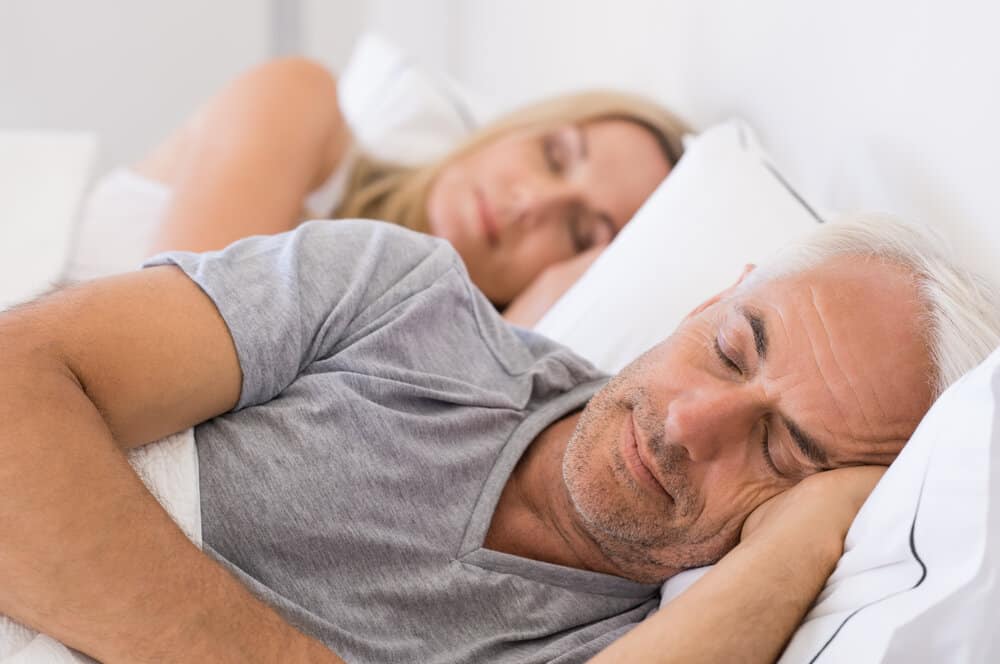We know that men and women have their differences, but did you know that those differences also apply to the way we sleep?
While we know much about the health benefits of sleep, there are important differences between how men sleep and how women sleep. This includes their susceptibility to sleeping disorders, hormonal factors, and differences in sleep cycles.
Read more to find out more about gender sleep differences.
Total Amount of Sleep
Research shows that women, on average, get more total sleep—5 to 28 minutes more—each day. This includes both nighttime sleep and any daytime naps.
But women also experience lower quality sleep and more sleep fragmentation—more interruptions in their sleep. Some researchers attribute the greater total sleep time as a way to compensate for the lower sleep quality.

Sleep Cycles
During a normal night of sleep, we progress through three to five sleep cycles. Each of these cycles lasts from 70 to 120 minutes and is made up of four sleep stages.
- Stage 1: transition phase between wakefulness and sleep
- Stage 2: body temperature drops, heart rate begins to slow
- Stage 3: deep sleep, slowing of breathing, brain, and muscle activity
- Stage 4: final stage—heightened brain activity and more vivid dreaming
Women and men have differences in their sleep patterns. Women spend more time than men in stage 3—deep sleep—and spend less time in stage 1, which is the lightest sleep.
Circadian Rhythm
Our circadian rhythm, our body’s 24-hour clock, regulates many of the body’s systems and processes. One of the main functions of circadian rhythm is to regulate sleep / wake patterns.
Research shows that the internal clocks of women are a few minutes shorter and they have earlier circadian timing, leading them to get to bed and wake up earlier.
Hormones
Hormones are a main driver in the sleep differences between men and women. Shifts in the production of hormones during a woman’s life can lead to sleeping problems and sleep disturbances.
Some of these changes include the menstrual cycle, pregnancy, and menopause. Age-related hormonal changes and hormone shifts from medications can affect both men and women.
Insomnia
Women are 2-3 times more likely to suffer from insomnia than men. Studies also show that the lifetime risk for insomnia is 40% greater for women than it is for men.
Critically, there are differences between if, and ho,w women and men report insomnia. Women report insomnia that involves multiple symptoms while men typically report only a single insomnia symptom.
Sleep Apnea
Men are twice as likely to suffer from sleep apnea, a condition where an individual’s breathing becomes shallow or pauses from time to time during their sleep. Moderate to severe sleep apnea affects, on average, 13% of men and 6% of women between the ages of 30 to 70.
Women experience symptoms of sleep apnea differently from men. Sleep apnea in women is commonly mistaken for diabetes, hypertension, and depression among other symptoms.
Sleep Differences Between Men and Women
We’ve discussed how man factors affect gender sleep differences. Among these are differences in circadian rhythms, sleep cycles, and hormone production. Our bodies are complex, and in addition to genetic factors, everyone’s individual sleep challenges are different.
Regardless of the differences, we at Sleep Dynamics understand just how important a good night’s sleep is! We can help you mitigate the effects of bad sleep and work on improving sleeping habits. Contact us for the best, professional sleep services and sleep treatment options.



